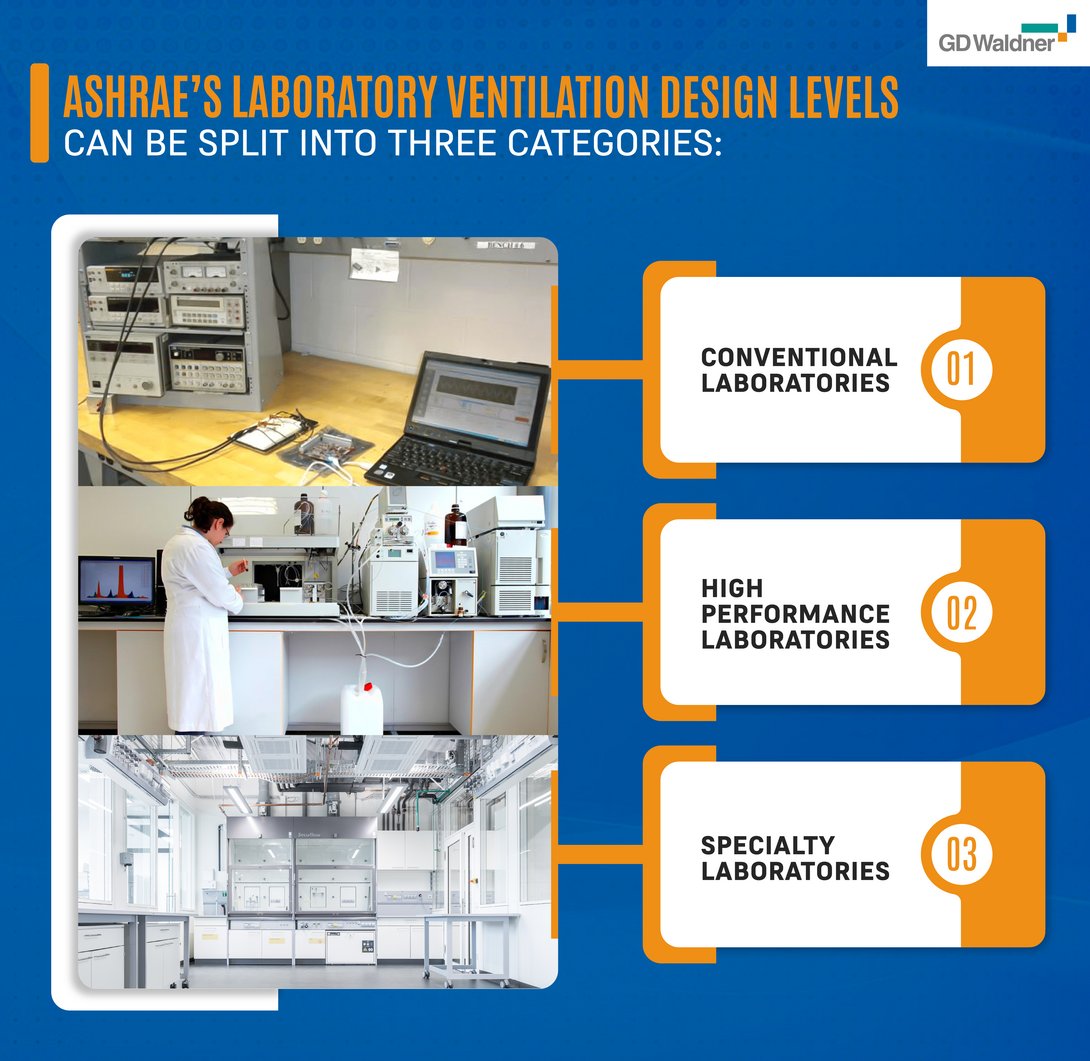The American Society of Heating, Refrigerating and Air-Conditioning Engineers (ASHRAE), known for its standards and guidelines in HVAC&R, has also set forth some guiding principles for laboratory ventilation design levels. You can think of these as your roadmap to a safe, functional lab environment.
By setting the design criteria based on risks, we can get away from the one-size-fits-all-all mentality and focus on protection that is risk-based. With this approach, you can not only save energy, but you can make your labs safer.
ASHRAE’s laboratory ventilation design levels can be split into three categories:
1. Conventional Laboratories: These are your typical labs where experiments are performed with lower-risk substances. Here, the primary safety device is usually the chemical fume hood. Standard room ventilation and basic lab practices are typically enough to keep everyone safe and sound.
2. High-Performance Laboratories: These labs take it up a notch. They deal with moderate-risk substances and often require a more advanced ventilation strategy to protect the lab users. This might include Variable Air Volume (VAV) systems and automatic sash closures on fume hoods, among other controls.
3. Specialty Laboratories: These labs are the top tier, working with high-risk substances that require the utmost safety precautions. They typically need sophisticated ventilation controls, like dedicated HVAC systems, and may even need specialized equipment like glove boxes or biosafety cabinets. Safety, as always, is king!
The ASHRAE classification mimics the Biosafety classifications (BSL1, BSL2, BSL3, BSL4). ASHRAE classifies chemical labs into 5 classes. The classification is based on risk. A class 0 really needs no hood, whereas a class 4 needs a very sophisticated system. While not everyone has heard of this, this is the future for managing hoods/labs in a more energy-efficient way, while not jeopardizing safety.
Understanding where your lab falls on the ASHRAE classification helps dictate the necessary ventilation design and safety measures. It ensures the people working in the lab are protected, the work is performed effectively, and the environmental impact is minimized.
So, whether you’re in a conventional lab or a speciality lab, understanding your ASHRAE classification can help make sure you’re breathing easy (and safely!) while you’re making your scientific breakthroughs.
Until next time, keep those neurons firing, and those experiments running, and as always, stay safe!

